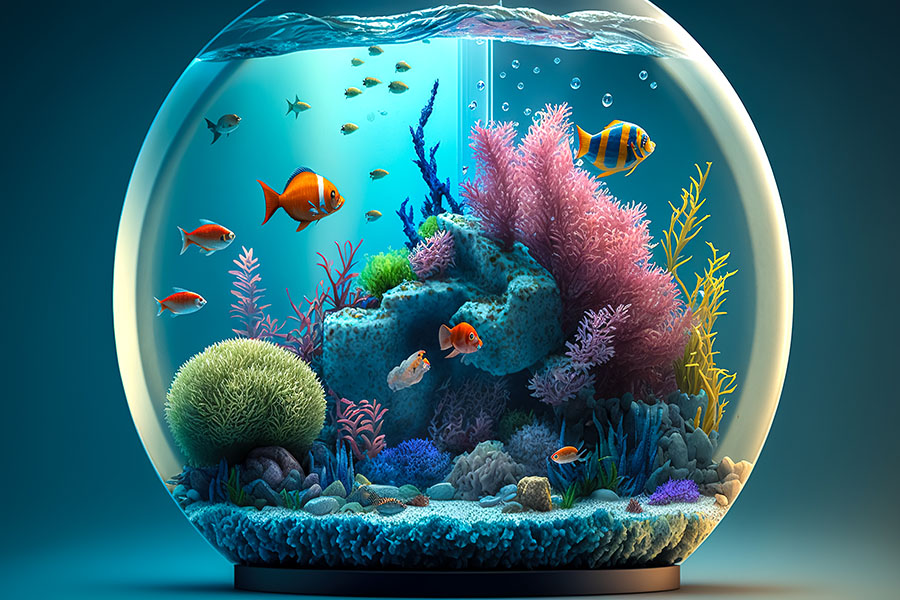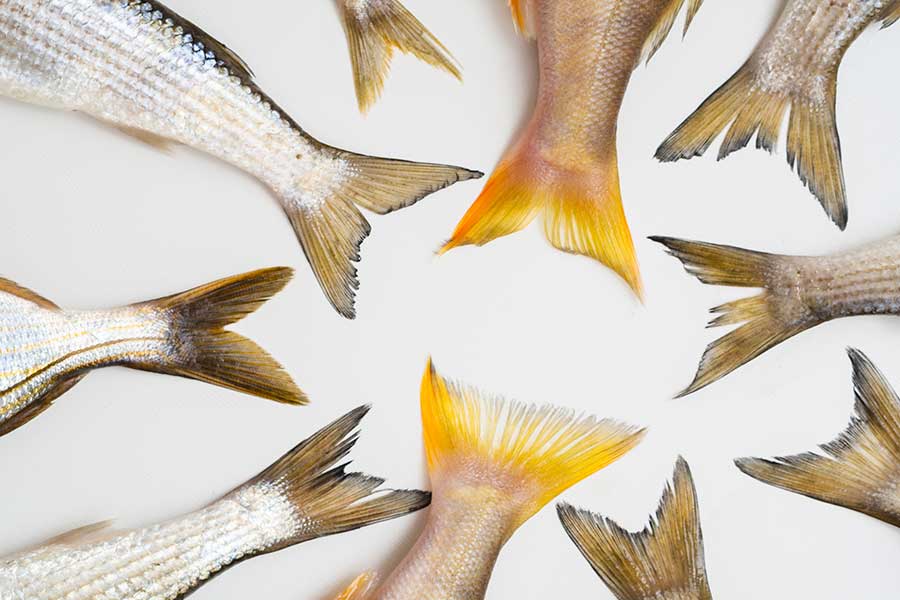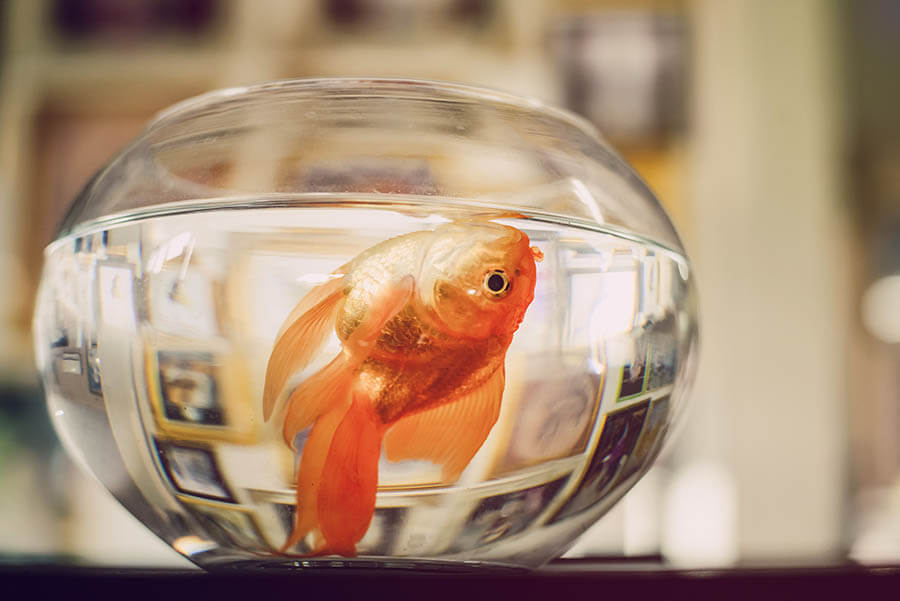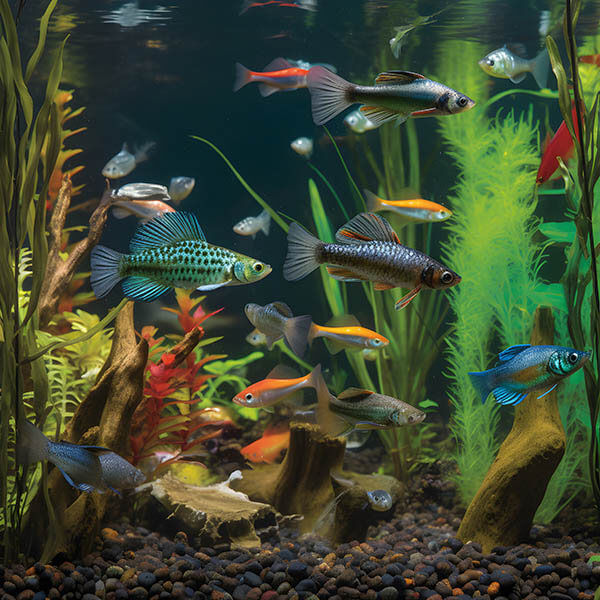Are you looking to set up a low-maintenance aquarium? Let’s explore a variety of fascinating aquarium fish that can thrive without the need for a filter. Whether you’re a beginner or a seasoned aquarist, discovering the fish species that can thrive in a filter-free environment can open up new possibilities for your aquatic hobby. Let’s dive in and explore the world of aquarium fish that don’t need a filter.
Goldfish
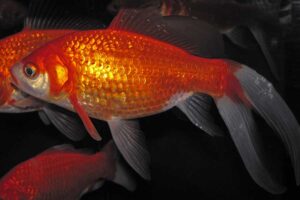
Two sets of paired fins no scales on the head, large eyes, orange, blueish-grey, brown, yellow, white, and black colors: this is the attractive Goldfish!
Goldfish is among the aquarium fish that do not require a filter. These resilient little fish can adapt to various conditions and do not need special care. Originating in Asia, they can thrive well in rice paddies and other small bodies of water with minimal filtration. They can adapt to a wide range of conditions and do not require special care.
They are friendly in nature and able to learn through association. Goldfish usually do not show aggression towards each other. Even if they are of different sizes and ages, they will recognize other fish in the tank over time.
Common goldfish, comets, and shubunkins can survive in cold winters and are great for outdoor ponds. Fancy goldfish, such as orandas, moors, and ryukins, can also thrive in outdoor ponds but are more susceptible to predators. Therefore, it is best to keep them indoors during harsh winters. In aquariums, adult common goldfish, such as comets, and shubunkins need at least 20 gallons of water per fish. On the other hand, adult fancy goldfish should have at least 10 gallons per fish.
Goldfish, generally, are not efficient at converting food into energy, so they may produce more waste than other fish. To reduce waste and ammonia production, switch them to a pellet-based diet once they reach adulthood.
Bettas
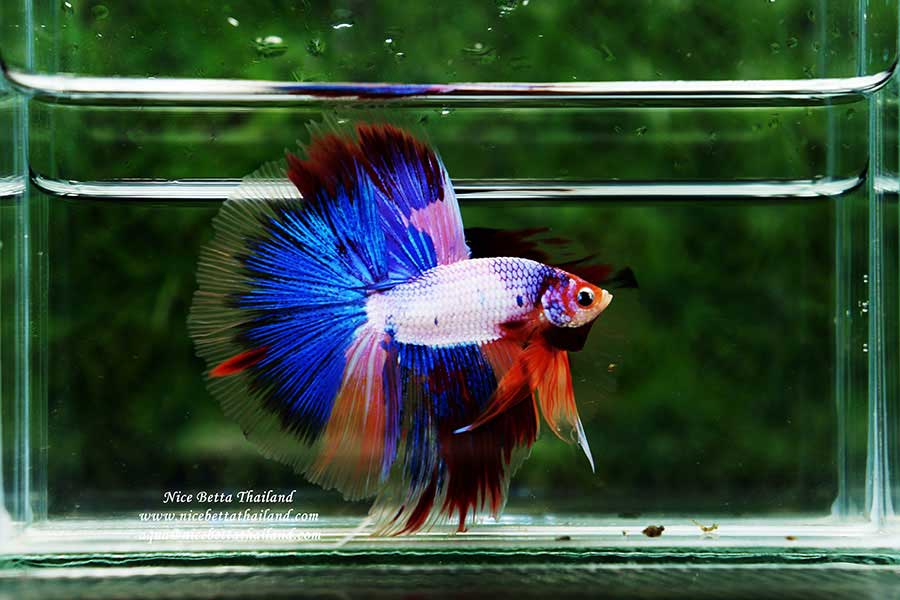
The Betta fish is no doubt an aquatic beauty. They typically grow to about 3 inches in length. They have a stunning array of colors, which become even more vibrant during mating season. A healthy Betta can live for 3 to 5 years, depending on its breed and environmental conditions.
Bettas are small freshwater fish originating from Southeast Asia, where they inhabit ponds and streams with slow currents. They can tolerate poor water quality and therefore are best as aquarium fish. Also, they do not require elaborate care or equipment.
While Bettas are generally compatible with other fish species, male Bettas display aggressive behavior towards each other. They are territorial and do not coexist well with other species. Bettas may also prey on other fish if they are smaller, so it’s best to keep them in Betta-only tanks.
Being carnivorous Bettas may eat smaller fish, so it’s best not to mix them with larger species. A varied diet, including live and freeze-dried foods, is essential for their well-being.
Betta fish can thrive in warmer waters, with temperatures ranging from 76 to 81 °F. They require larger tanks, as male Bettas are territorial and need ample water volume. Since they don’t necessarily need a filter, they can also thrive in low-oxygen waters.
Tetras
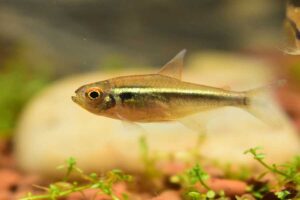
Despite their small size, a school of brightly colored Tetras can create a stunning display in an aquarium. Their vibrant blue and red colors make them a beautiful addition to any freshwater aquarium community.
Tetras are a group of fish that can thrive without a filter. These small freshwater fish originated from South America, where they inhabit rivers and streams with minimal filtration. Tetras are relatively easy to care for and make an excellent addition to any aquarium.
Generally, Tetras are known for their peaceful temperament and schooling behavior. Neon Tetras, for example, prefer to be in a group of at least 15 fish to feel secure and comfortable. Otherwise, they may become stressed and feel threatened.
Tetras are omnivorous and require a balanced diet of animal proteins, plants, and vegetables to ensure long-term health and activity. A group of Tetras need a tank with a minimum of 10 gallons of water. However, due to their curious nature, we recommend a larger tank for this species.
Guppies
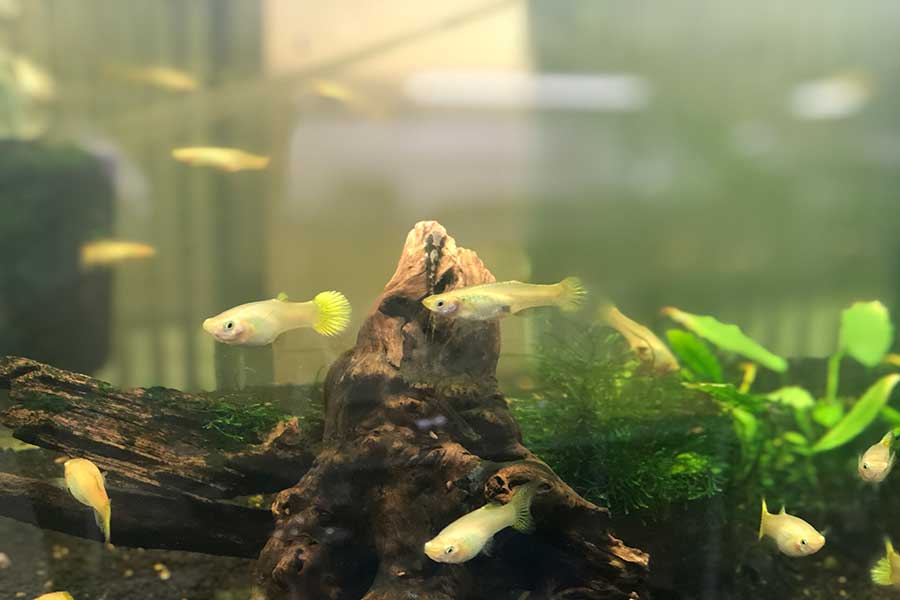
Guppies are “the rainbow fish” due to their wide range of stunning varieties. Their vibrant colors and active behavior make them perfect for an aquarium.
These colorful and lively fish originate from Trinidad and Tobago, where they inhabit slow-moving streams and lakes. They are very tolerant of poor water quality and do not require intricate care or equipment. Guppies are an excellent choice for beginners as they are relatively easy to care for.
They (Guppies) can coexist with almost any fish species as they are friendly and accommodating. However, guppies often become the target of bullying by other fish. Males may be more skittish and aggressive than females, displaying slightly aggressive behavior during territorial disputes and mating contests. We recommend keeping 2 to 3 females for every male guppy in the tank to reduce male aggression.
Being omnivorous, Guppies will eat a variety of foods, including live and frozen food, algae, spirulina, vegetables, insect larvae, and more. You can feed them food flakes and pellets or prepare homemade recipes containing live food and vegetables. Guppies require a varied diet to stay healthy and happy over time.
Guppies need consistent temperatures between 72 and 82 °F in their tanks. Sudden temperature changes can harm the guppies, so fluctuations are acceptable as long as they are not abrupt. Space-wise, you should provide about 2 gallons of water for each guppy.
Zebra Dinos
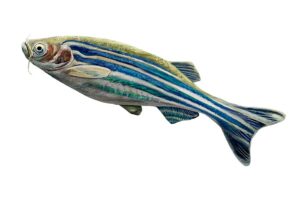
The zebra danio is a small fish, typically around two inches in size, and is well-suited for a community aquarium. You can identify it by its distinct blue and purple/rosy stripes and its high energy levels. While generally peaceful, zebra danios may nip at the fins of certain other fish species. They coexist well with most tank mates but may show interest in fish with long, flowing fins such as angelfish, bettas, and guppies.
In terms of habitat, zebra danios are adaptable to a wide range of environments, including fast-flowing streams and stagnant waters, owing to their highly active nature.
Zebra Danios are quiet, energetic, and lively. They thrive in groups of at least five individuals and require ample space to explore due to their curious nature.
As omnivores, zebra danios have a varied diet and will consume almost anything edible. Providing them with a balanced diet that includes live food and vegetables is important to ensure optimal nutrient intake.
When it comes to tank requirements, zebra danios prefer cooler water temperatures ranging from 64 to 74 °F, which may make them incompatible with species like guppies that prefer warmer conditions.
Let’s Wrap it Up!
In conclusion, several fascinating aquarium fish species can thrive without the need for a filter, making them suitable for low-maintenance aquarium setups. Whether it’s the resilient and adaptable goldfish, the stunning bettas, the vibrant tetras, or the colorful guppies, these fish offer aquarists the opportunity to create beautiful and thriving aquatic environments with minimal equipment. Understanding the specific needs and behaviors of these fish is essential for providing them with a suitable habitat. With the right knowledge and care, keeping an aquarium without a filter can be a rewarding and enjoyable experience for both beginners and seasoned aquarists alike.
Dr. Musya Edward
DVM | Consultant Surgeon (pets and large animals)
Dr. Musya Edward is a highly skilled and assertive veterinary surgeon who is committed to the well-being of pets and large animals. With his extensive knowledge and experience in veterinary medicine, he ensures that every pet receives the best possible care. His expertise in surgical procedures is unmatched, and he leaves no stone unturned in ensuring the complete recovery of his patients. His passion for animals extends beyond the operating room and you can find him actively engaging with the pet-loving community through his insightful articles and expert advice on pet care.


